In a world of various coffee types, a true coffee lover is always on the search for more to try. Now more than ever, Thailand is rising in popularity when it comes to coffee. It is one of the quickest and most prominent coffee-growing regions and it is a real no-brainer that you should try their coffee!
Table Of Contents
−- Coffee culture in the country
- Coffee guide: Chiang Mai, Thailand
- Kafae Boran
- Coffee-growing regions
- Most famous coffee brands from Thailand
- What are the most popular coffee chains in Thailand?
- When do Thai locals consume their coffee?
- Thai iced coffee recipe
- Is the traditional Thai iced coffee strong?
- Final words
Coffee culture in the country
More than brewing exceptional coffee, Thai baristas wanted to perfect the coffee supply chain. This is the reason why the art that is coffee making has been rampant all over the country to the point that the country is being recognized for their delicious coffee. To learn more about the country’s coffee culture, we should first get to know Thailand’s coffee capital: Chiang Mai.
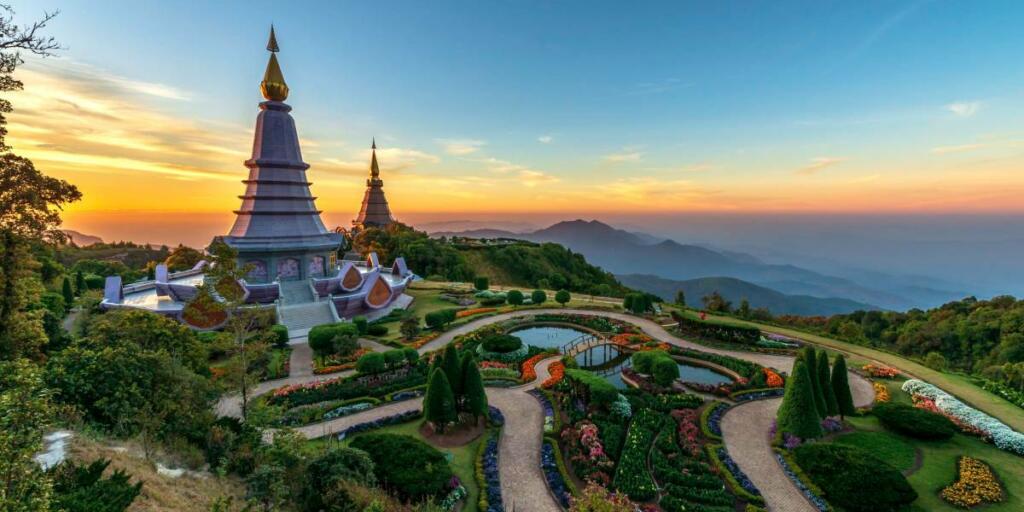
Coffee guide: Chiang Mai, Thailand
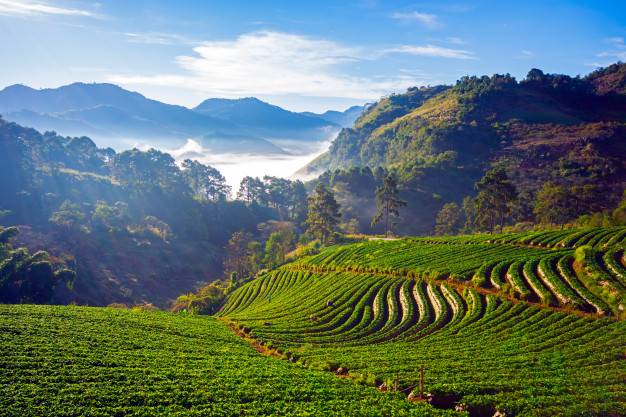
It was through The Chiang Mai arabica market and the Thai Royal Project created by King Bhumibol Adulyadej in 1969 that started the coffee history in Thailand. The government basically sponsored the program to help the poor earn more, especially those residing in the Northern part of the country. The government encouraged the locals to begin growing and harvesting coffee. This way, they can make use of the rich soil and the ideal coffee-growing climate conditions of the region while helping the economy simultaneously. And it goes without saying, it was a massive success!
Chiang Mai houses the Royal Coffee Research Centre and Arabica Association of Thailand making it the coffee capital of the country. Despite the relatively shorter duration of coffee growing, Thailand’s coffee is undoubtedly one of the richest in the world. In fact, it is one of the leading coffee-producing countries in Asia.
It is worth noting that the north largely produces arabica while the south produces more robusta. This is because arabica beans require cooler climates!
Kafae Boran
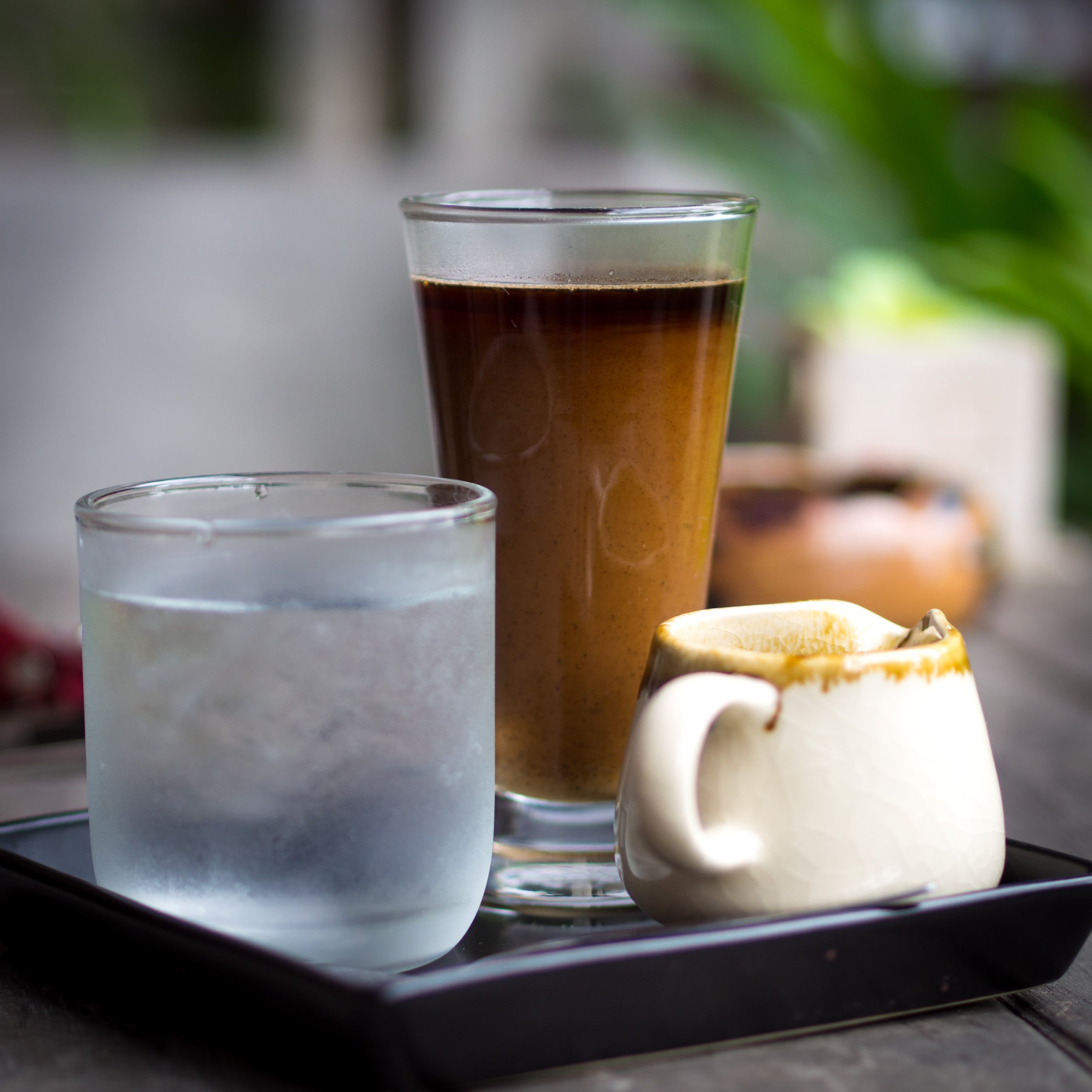
Three decades ago, if you wanted some coffee, you had instant coffee or Kafae Boran to choose from. Kafae Boran came about during WWI and is known to be the traditional Thai coffee. It was discovered due to the expensive price point of coffee during that time which was difficult to afford. During the roasting process, common and less expensive grains were added to the coffee beans and were then filtered through a ‘sock filter’ or a fabric bag. Then, boiling water is poured before leaving to steep. Today, this drink has added brown rice, soy beans, salt, sugar, tamarind seeds, and butter. The initial goal was to have coffee that’s cheaper, but now it has grown way beyond the country.
Coffee-growing regions
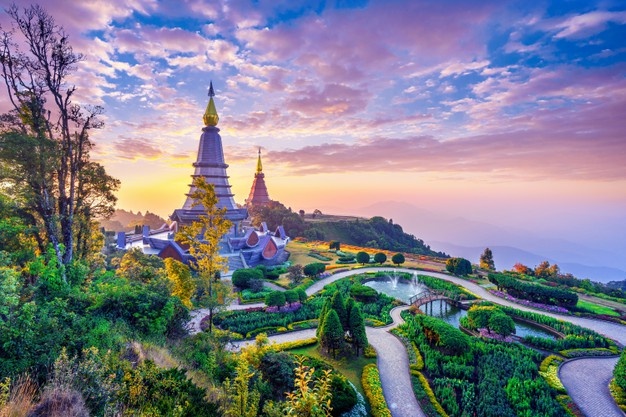
Doi Chang
High in the hills near Chiang Rai is a village called Doi Chang located in the Golden Triangle region of Thailand. It is a lovely place coffee enthusiasts would surely love. Doi Chaang Coffee House is a quick 1 ½ ride from Chiang Rai. The journey is a breeze as you can enjoy nature’s view along the way. The plantation has tours you can avail that includes allowing you to try different coffee types and even lets you purchase beans you end up loving. December is the best time to visit because of the cooler weather and the full swing processing plant. Should you be the type to prefer touring on your own time and pace, there are also self-guided tours you can avail.
Doi Tung
In 1988, the Princess Mother initiated an alternative for opium cultivation in the form of the Doi Tung, a famous Thai coffee brand. The Doi Tung Royal Villa and Commemorative Hall, as well as the plantation, takes 1 ½ hour of travel from Chang Rai. A great spot to speed the night is at the Doi Tung Lodge. Guests have nothing but praises during their stay in the lodge.
Mae Jan Tai village located in the Chiang Rai district is where the Akha Ama Coffee was born. Twice a year, 20 lucky coffee enthusiasts get to experience living like a local learning how the coffee is produced and harvested. This typically happens around November and January and believe me when I say that slots fill up pretty quickly! If you don’t make it to the list, you can still go ahead and visit the Akha Ama Coffee Shop located in Chiang Mai to try some of their brews.
Doi Saket
Doi Saket is another coffee-growing region and it is where the farms that cultivate the Typica are located. Doi Saket is located in Chiang Mai province and it includes the coffee farm called Indoi which has its highest elevation at 1500m. Indoi, which is a 35-year old family business, also experiments with Geisha and other varieties. Today, a rather young couple from the family runs the business. The owners have been experimenting around creating sweet and complex flavors. In fact, Fuadi stated, “sweetness is the new acidity.”
Kanchanaburi
In the west of Thailand lies the Kanchanaburi and in its northern region lies Thong Pha Phum. Thong Pha Phum is a mountainous region known for growing specialty coffee. In fact, the most expensive coffee called civet coffee is sold in Kanchanaburi. Civet coffee is created from beans of coffee berries eaten by the Asian Palm Civet. Literally, these are feces from the small cat’s digestive system. Thong Pha Phum Place is a great place to stay overnight with the double room costing around THB 600.
Chumphon
In Southern Thailand is the one of the most popular coffee districts called Chumphon. In the area, you’ll find yourself an insanely pleasing and gorgeous view of robusta coffee trees and farms. Chumphon is open for visitors who want to try their coffee and for those who want to tour around the area. There are overnight trains and buses that can easily take you to Chumphon from Bangkok and back!
Most famous coffee brands from Thailand
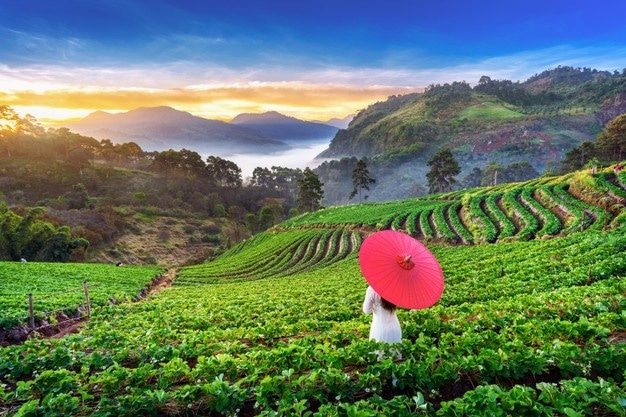
The most popular coffee brands would have to be Doi chang (Mountain Elephant) and Doi Tung (Mountain Flag) and they are also EU Coffee Association-approved.
Doi Chang is made from the partnership between the Akha hillside tribe of Doi Chaang Village and Canadian coffee enthusiasts. The brand did so well that it is undoubtedly the leading coffee brand in Thailand.
Doi Tung, as discussed, was born to replace opium cultivation and now has coffee shops all over Thailand where they offer their cups of coffee, coffee beans, and other handcrafted products.
Serving traditional Thai Coffee
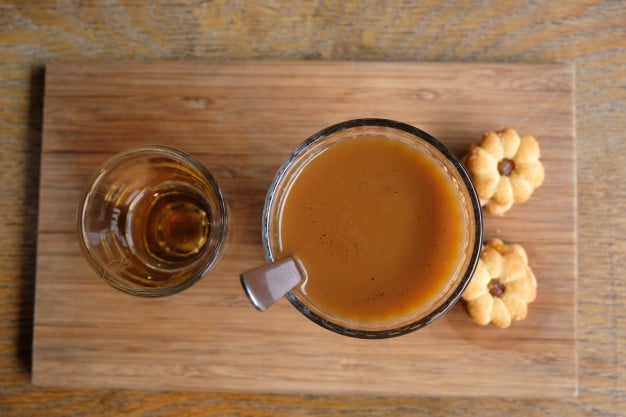
You can find traditional Thai coffee in markets and random stands all over Thailand. Sock filters are used to filter the ground coffee beans and are steeped for about 10 minutes until a strong, bitter, and dark coffee is produced.
Thai coffee comes out bitter not only because of the coffee beans used but also because they are almost always over extracted in an attempt to save money and supply. Locals also utilize this coffee mix made of corn and soybeans called Oliang Powder Mix. The coffee’s bitterness is addressed by adding evaporated milk, brown sugar, or sweetened condensed milk. There is no one way to serve Thai coffee as you’ll see locals playing around their coffee. Different ingredients are added such as cardamom seeds, corn, soybeans, sesame seeds, and rice.
What are the most popular coffee chains in Thailand?
If you are planning to visit the country, you should of course keep a list of the popular coffee chains in the country and make sure that you won’t miss out on any! Look out for these coffee shops:
- Black Canyon
- Amazon
- Coffee World
- Doi Chaang
When do Thai locals consume their coffee?
Like most people, people in Thailand like their mornings with hot coffee. But what makes them different is that locals actually drink coffee at all hours daily. In fact, traditional coffee shops remain open until late night and some even past midnight. At night, their coffee is prepared with regular milk. However, a special coffee recipe with condensed milk is reserved for the mornings.
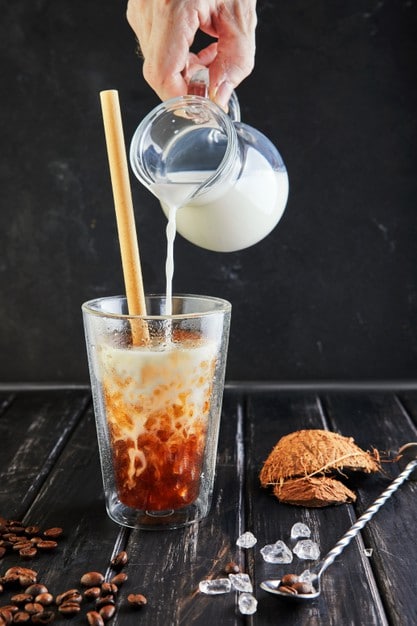
Traditional Thai coffee is called Oliang. “O” means “black” and “liang” means “cold.” It’s created by roasting espresso beans in a pan over a charcoal fire. Corn kernels, tamarind seeds, and other ingredients are indeed. Now during the second roast, sugar and butter are added until caramelization takes place. After which, the mixture is brewed in water, allowed to cool, then served over ice. Depending on your choice, you can add condensed or evaporated milk. If you try it along the streets of Thailand, they typically serve it in a plastic bag with straw.
Oliang has a variant called Oliang Jumba which is basically the fruitier version. Basically, strawberry syrup is added to the Thai coffee blend for that extra sweetness.
Thai iced coffee recipe
Mix the following ingredients for that delicious summer treat!
- 2 oz espresso or 6 oz strong brewed black coffee
- ½ teaspoon coriander
- ¼ teaspoon cinnamon
- ½ teaspoon cardamom
- 3 tablespoons condensed milk
- 1 tablespoon heavy cream
- 4 ice cubes
If you love coffee and chai tea, then you’re in for a treat with this drink!
Is the traditional Thai iced coffee strong?
Yes, Thai iced coffee gives out a strong punch. While the milks and creams may tone this down, the strength is still difficult to hide.
Final words
Any coffee enthusiast should consider visiting Thailand to learn more about their coffee scene. As discussed, there are tours and accommodations you may avail to immerse in their coffee culture. If not, I’m sure there are Thai coffees you can find around or you can whip up one on your own.
Disclaimer: This post contains affiliate links, which means I may receive a small commission, at no extra cost to you, if you make a purchase using these links. Remember to support us by purchasing through the Amazon/Walmart/Impact Radius links provided. Last update on 2024-06-27 / Affiliate links / Images from Amazon Product Advertising API
Disclosure: No compensation or free products were received in exchange for writing this review.

Editorial Staff
The editorial staff at Crazy Coffee Crave is a team of coffee enthusiasts & Baristas who enjoy the one thing we all think about as soon as we get up in the morning. Trusted by thousands of readers worldwide.









